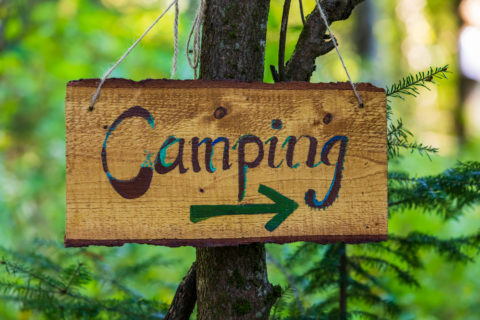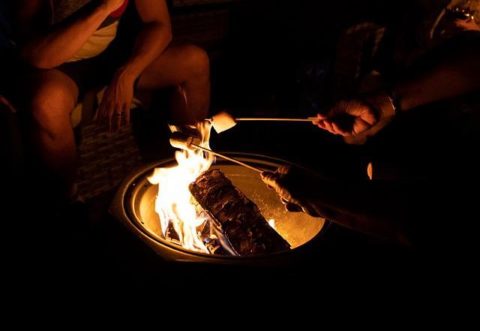
One of my favorite hobbies, when I am driving along the NY State Thruway, is to pick out the motorcoaches and quiz myself on where they are located and who my contact is. It is even more fun when you are traveling with an industry friend and it becomes a game!
One of the biggest changes I saw during the last two years was there were few to no buses on the Thruway, but lots of RVs. Lots. From small pop-ups to big bus-sized rigs to huge trailers being pulled by huge pickup trucks.
The pandemic initially shut down many campgrounds, but they have since roared back to life and many said 2021 was their best year ever and 2022 is looking like it will end even stronger.
Their popularity has been a growing trend for a while so I thought I would share some data and ways for other tourism businesses to prosper from this segment of our industry. Get your marshmallow stick and come sit by the campfire to learn more!

It’s been a Growing Market – Even before Covid
The number of people in North America who identify as campers has been growing steadily in the last 10 years. KOA ( Kampgrounds of America) has been publishing an annual report since 2015 which has documented the growth and change of this tourism sector.
The 2022 KOA North American Camping Report says that in 2021, camping accounted for 40% of all leisure trips with more than half of travelers (53%) including camping in some or all of their travel. One of the elements I like about this free report is that it has lots of statistics and key findings. Here are some I found interesting:
Increasing diversity
Camping has long been thought to have a homogenous demographic, but that has slowly been changing. In 2021, 54% of new campers came from non-white groups, which is up from 50% just a few years ago. I am also impressed that the KOA report has so many images of families of various ethnicities having fun. Diversity in imagery is something all tourism businesses can improve on.
Remote workers and Good wi-fi
Back in the day, traditional campers didn’t need or care about wi-fi and cell service. It was all about getting away from it all. But Covid changed all that with the work from home or WFA ( work from anywhere) model. Campers who sometimes or always work while camping increased from 37% to 46%. 57% of Millennials will work while they are camping. The percentage of campers who say access to wifi impacts their camping choices ‘ a great deal’ has risen from 13% to 33%.
Many Campgrounds are Family Owned
My camping experiences have reflected this. There are national and state campgrounds, and chains such as KOA and Jellystone campgrounds, but the vast majority of campgrounds are ‘Mom and Pop’ businesses. These are people who often had some land and either camped on it themselves or started developing it so others could enjoy camping. Amenities such as pools and pavilions were added, and they are typically run by family members with some summer help added in.
These family-owned campgrounds contribute to your tourism economy by adding overnight accommodations. Campers love to shop, eat out and explore. Rainy days will find them at museums and other indoor attractions.
There is a real pride of ownership for these campground owners since their blood, sweat, tears, and time have created the business. One trend is that as these business owners decide to retire and cash out, they are often sold to large real estate holding companies with no local ties. This trend is countered by young families that are willing to try this lifestyle job and will move to the area. Time will tell which trend will become dominant.
Loyal Clientele
I didn’t realize until I started camping that there were Seasonal Campers. These are people that leave their camper at a campground for the entire summer ( or year) and use it as a second home. These campers tend to live within an hour of their campsite. These are the campers that will add decks, patios, gardens, and all kinds of decorations. Campground owners like the repeat and stable income from these types of campers. Once they are ensconced there, they rarely leave.
How do you Capitalize on Campers?
As I wrote this post, I realized that it would be easier for you to digest if I broke it up into smaller elements. So watch your email for Part 2 – How your Business can capitalize on Campers!
Check out :
The 2022 KOA Annual North America Camping Report

How can I help you this fall?
Fall means back to school for kids – how about you? My goal is to help you increase your knowledge so you can be the Best TourismPro possible! Here are some opportunities over the next few weeks:
Flash sale on all TourismProAcademy courses through Friday September 30th! Yep, check out TourismProAcademy for online courses such as Fill Your Parking Lot: Secrets to Getting more Group Tours. All courses are 25% with code GOAL through Friday. Click here to start learning. Purchase once and have ongoing access!
Free Webinar: Group Tour Tactics for our New Reality. Join this engaging webinar to learn more about how to get more Group tours back to your business. The next free webinar is Thursday, October 20th at 11 a.m EST. Join me and the sponsors from Groups Today magazine for an informative and fun hour. Register here!
Online Tourism Training Programs. Are you a Tourism Office looking for ways to educate and inform your members? My live Online Tourism Training Program is a cost-effective way to do that and build a training library for your organization. Organizations like yours hire me for Group Tour Training, Sales Training, and Tourism 101 programs for new members. Hit reply to this email and let’s set up a time to talk! I am booking 2023 now so let’s make a plan!
P.S. – Can I ask a favor? Could you forward this to two people who could benefit from reading my posts? Thanks!
